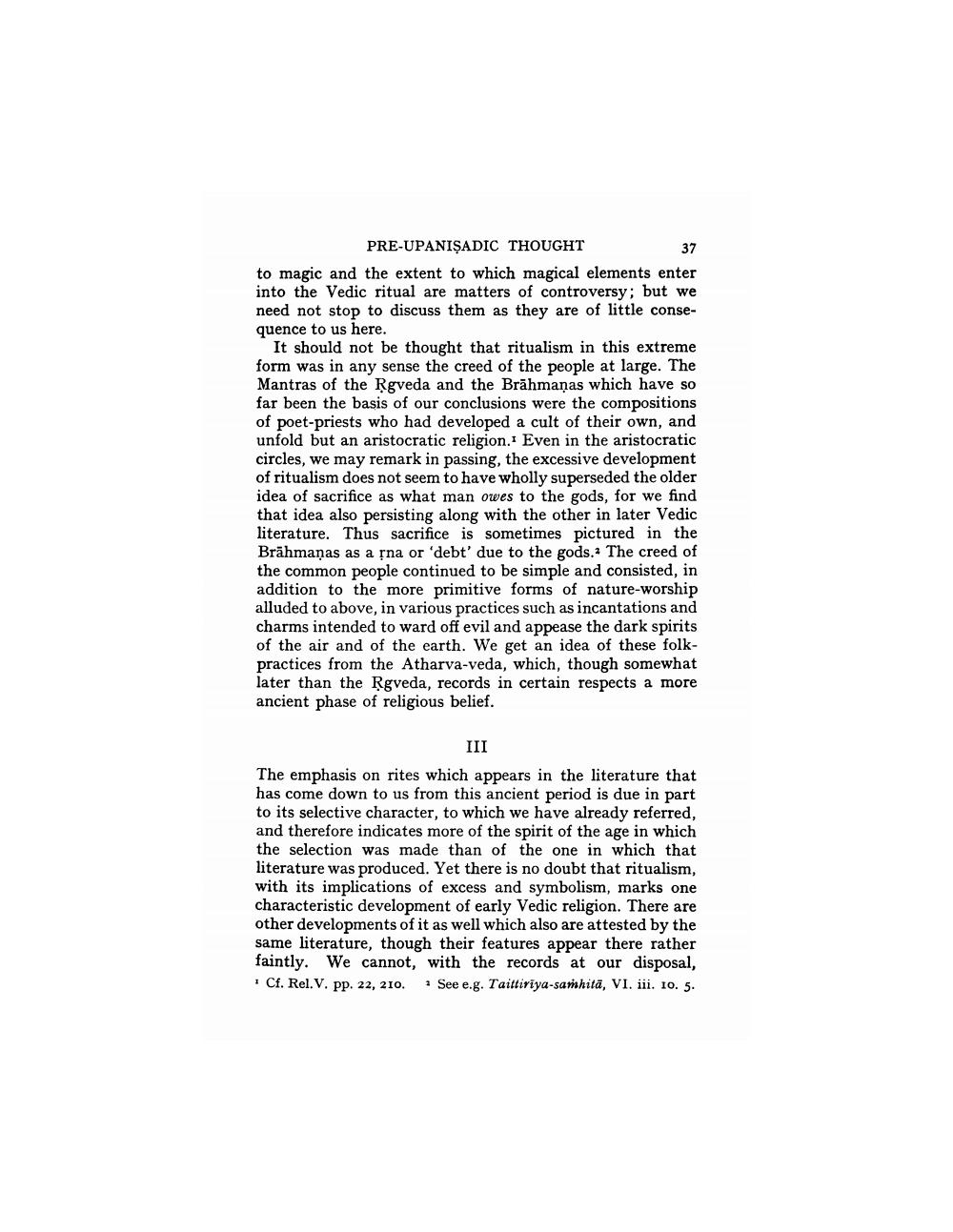________________
PRE-UPANIŞADIC THOUGHT
37 to magic and the extent to which magical elements enter into the Vedic ritual are matters of controversy; but we need not stop to discuss them as they are of little consequence to us here.
It should not be thought that ritualism in this extreme form was in any sense the creed of the people at large. The Mantras of the Rgveda and the Brāhmaṇas which have so far been the basis of our conclusions were the compositions of poet-priests who had developed a cult of their own, and unfold but an aristocratic religion. Even in the aristocratic circles, we may remark in passing, the excessive development of ritualism does not seem to have wholly superseded the older idea of sacrifice as what man owes to the gods, for we find that idea also persisting along with the other in later Vedic literature. Thus sacrifice is sometimes pictured in the Brāhmaṇas as a sna or 'debt' due to the gods. The creed of the common people continued to be simple and consisted, in addition to the more primitive forms of nature-worship alluded to above, in various practices such as incantations and charms intended to ward off evil and appease the dark spirits of the air and of the earth. We get an idea of these folkpractices from the Atharva-veda, which, though somewhat later than the Rgveda, records in certain respects a more ancient phase of religious belief.
III
The emphasis on rites which appears in the literature that has come down to us from this ancient period is due in part to its selective character, to which we have already referred, and therefore indicates more of the spirit of the age in which the selection was made than of the one in which that literature was produced. Yet there is no doubt that ritualism, with its implications of excess and symbolism, marks one characteristic development of early Vedic religion. There are other developments of it as well which also are attested by the same literature, though their features appear there rather faintly. We cannot, with the records at our disposal, Cf. Rel.V. pp. 22, 210. See e.g. Taittiriya-samhita, VI. iii. 10. 5.




